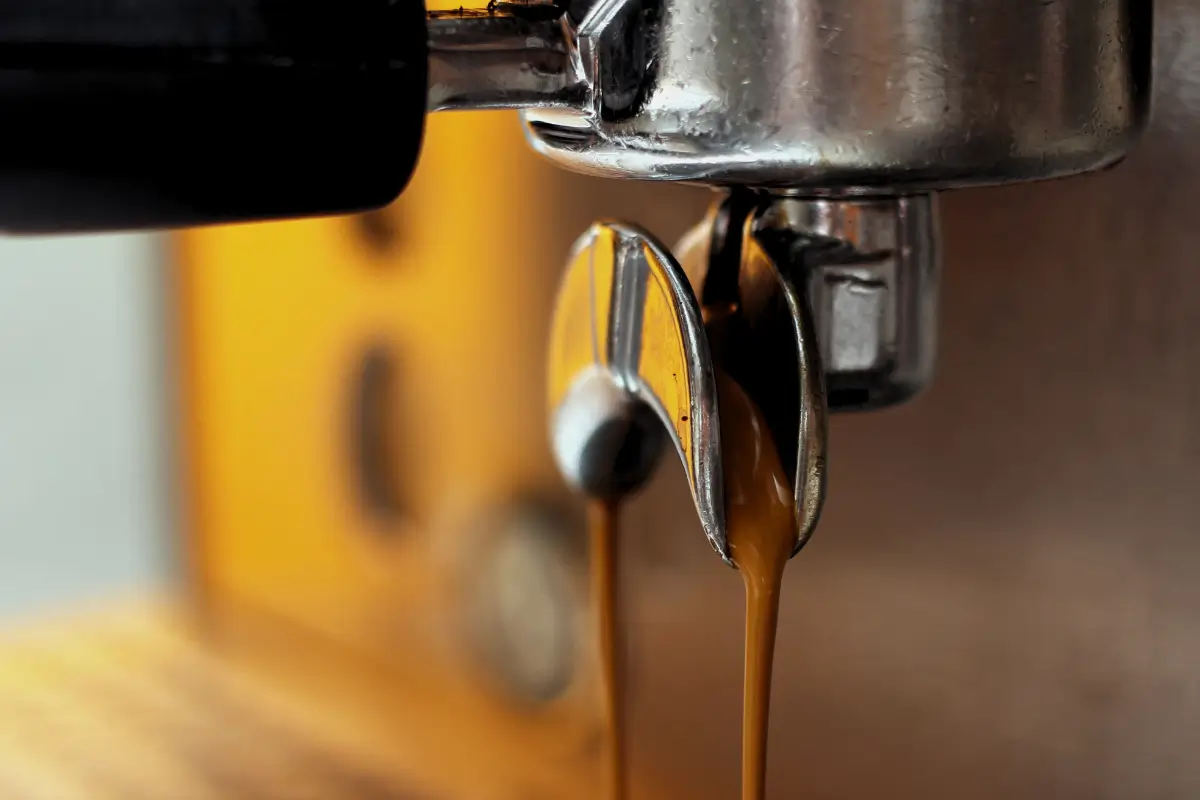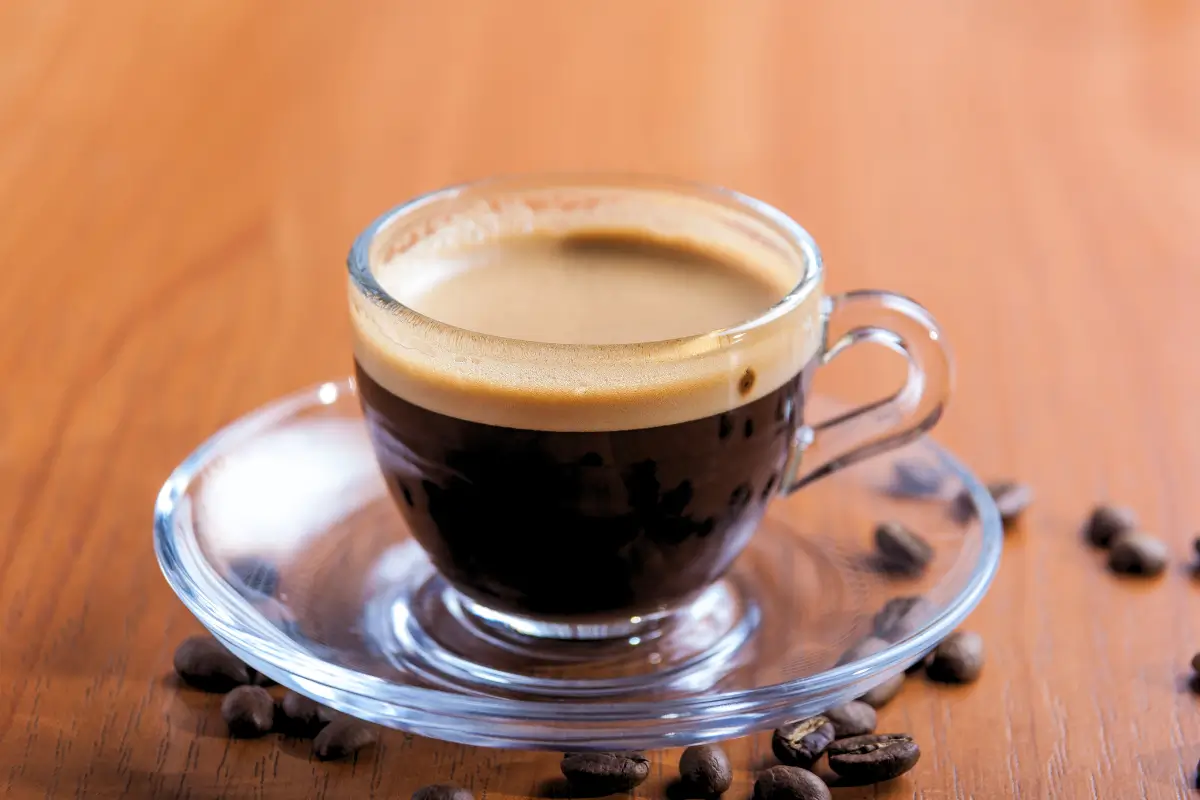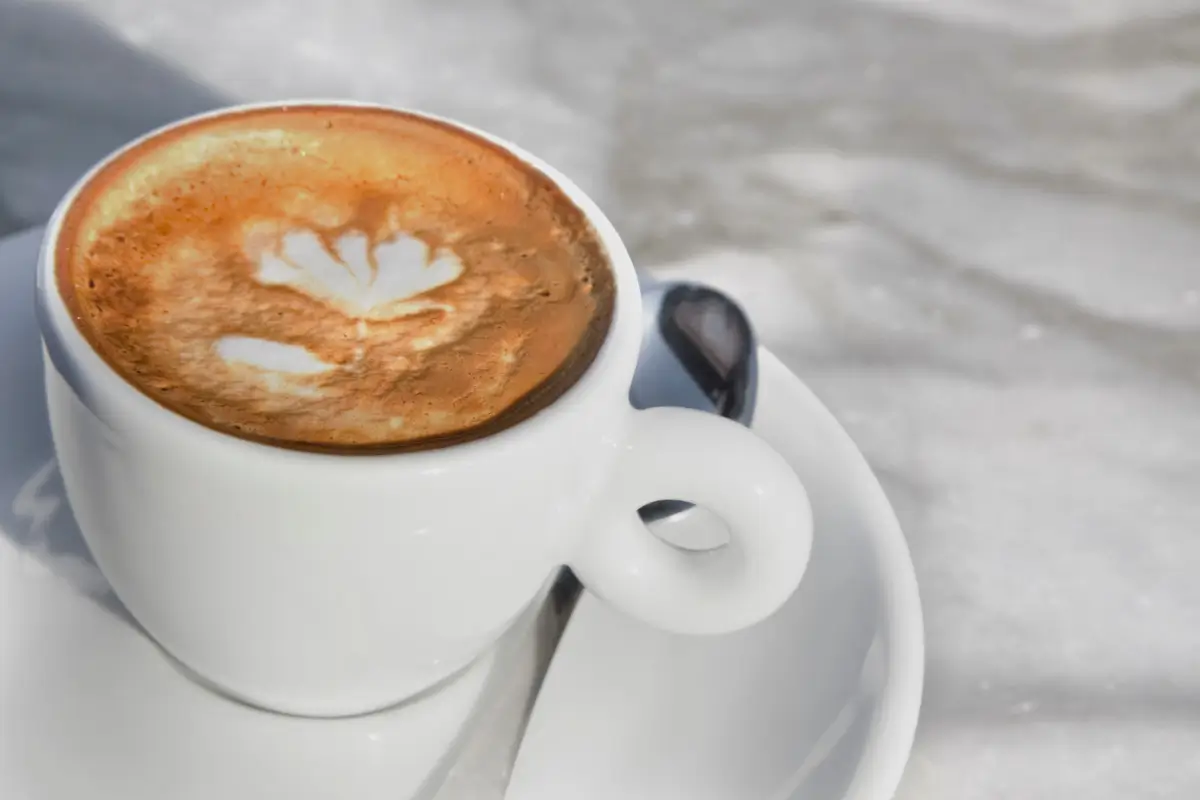No crema on espresso usually indicates stale coffee beans or an improper grind size. It might also result from low pressure during extraction.
Espresso lovers often seek the perfect crema, the golden layer of foam that enhances flavor and aroma. Crema forms when hot water emulsifies the coffee’s oils during extraction. Freshly roasted beans and the right grind size are crucial. Using old beans or an uneven grind can prevent crema formation.
Also, ensure your espresso machine maintains proper pressure. Regular maintenance and quality ingredients contribute to a satisfying espresso shot. Understanding these factors helps diagnose and fix issues, ensuring a rich, flavorful espresso experience every time.

The Essence Of Espresso Crema
Espresso lovers cherish the rich, golden crema atop their shot. It tells a story about the coffee’s freshness and quality. But what is this crema, and why is it so important?
Defining Crema
Crema is the thick, golden-brown layer on an espresso shot. It forms during the brewing process. High-pressure extraction creates tiny bubbles. These bubbles mix with the coffee’s oils. The result is a creamy foam that sits on top.
Crema is more than just foam. It carries intense flavors and aromas. It’s a sign of well-extracted espresso. Without crema, your espresso might lack depth and richness.
The Role Of Crema In Espresso Quality
Crema plays a crucial role in espresso quality. Here’s why:
- Flavor: Crema holds many of the coffee’s oils. These oils add to the flavor.
- Aroma: Crema traps the coffee’s aromas. It enhances the sensory experience.
- Appearance: A rich crema looks inviting. It signals a well-made espresso.
Not all espresso shots have perfect crema. Factors like the coffee beans, grind size, and machine pressure affect it. Still, crema remains a key quality marker.
| Factor | Impact on Crema |
|---|---|
| Freshness of Beans | Fresher beans produce more crema. |
| Grind Size | Proper grind size ensures optimal extraction. |
| Machine Pressure | High pressure creates better crema. |
Understanding crema helps you appreciate espresso more. It’s the essence of a great shot.
Factors Affecting Crema Formation
The crema on an espresso is a sign of a well-made shot. It adds flavor and texture. Several factors influence crema formation. Understanding these can help you achieve the perfect shot.
Bean Freshness And Quality
Freshness of the beans is crucial for good crema. Beans should be used within two weeks of roasting. Older beans lose oils, reducing crema. Always check the roast date before buying.
Quality matters too. High-quality beans from reputable sources produce better crema. Look for beans labeled as espresso roast.
Grind Size And Consistency
Grind size affects crema formation. Beans ground too fine or too coarse won’t work. A medium-fine grind is ideal for espresso.
Consistency in grind size is also important. Inconsistent grinds lead to uneven extraction. Use a good quality grinder to achieve uniform particles.
Water Pressure And Temperature
Water pressure should be around 9 bars. Insufficient pressure won’t extract oils properly. Too much pressure can make the espresso bitter.
Temperature of the water should be between 195°F and 205°F. Cold water won’t extract oils well. Water that’s too hot can burn the coffee.
The Science Of Extraction
The science behind espresso extraction is fascinating. Understanding it can help you achieve the perfect crema. Let’s dive into the factors that influence the extraction process.
Pressure Dynamics In Espresso Machines
Espresso machines operate under high pressure. This pressure is crucial for extracting flavors.
| Pressure Level | Impact on Extraction |
|---|---|
| 9 Bars | Optimal flavor extraction |
| Below 9 Bars | Weak and under-extracted |
| Above 9 Bars | Over-extraction, bitter taste |
Maintaining the correct pressure ensures a balanced and flavorful espresso.
Coffee Oils And Microfoam
Coffee oils are essential for crema. They give espresso its rich texture and flavor.
- Fresher beans produce more oils.
- Dark roasts have more visible oils.
Microfoam is another component. It forms from tiny air bubbles and coffee oils.
- Proper grinding ensures even extraction.
- Consistent tamping helps in forming microfoam.
Both coffee oils and microfoam contribute to a perfect crema.
Time And Its Impact On Extraction
Extraction time affects the quality of espresso. It should be between 25 to 30 seconds.
- Under 25 seconds: Espresso may taste sour.
- Over 30 seconds: Espresso may become bitter.
Timing is crucial for balancing flavors. Adjust grind size and tamping pressure to control extraction time.

Troubleshooting Crema Challenges
Struggling to get that perfect crema on your espresso? Don’t worry. There are several factors to consider. Let’s break down the common issues and how to fix them.
Machine Maintenance And Calibration
Proper machine maintenance is crucial. Regularly clean your espresso machine. Remove coffee oils and residues. Ensure that the machine’s pressure is calibrated correctly. A well-maintained machine produces better crema.
Adjusting The Grind
The grind size affects crema significantly. Use a burr grinder for uniform particles. If your crema is thin, try a finer grind. If it’s too thick, go coarser. Adjusting the grind can make a big difference.
Tamping Techniques For Optimal Resistance
Tamping is the final step before brewing. Press the coffee evenly with 30 pounds of pressure. Ensure the surface is level. Inconsistent tamping leads to uneven extraction. Proper tamping creates the right resistance for crema.
| Issue | Solution |
|---|---|
| Thin Crema | Use a finer grind, increase tamping pressure |
| Thick Crema | Use a coarser grind, decrease tamping pressure |
| No Crema | Check machine pressure, clean the machine |
- Regularly clean your espresso machine.
- Use a burr grinder for consistent grind size.
- Tamp with 30 pounds of pressure.
The Barista’s Touch
The magic behind a perfect espresso lies in the barista’s touch. A skilled barista can transform simple ingredients into a rich, flavorful experience. The absence of crema on your espresso often points to the barista’s skill and techniques.
The Importance Of Skill And Experience
A barista’s skill level can affect the espresso’s crema. Experience helps identify the right grind size and tamping pressure.
Proper grind size is crucial for extracting the perfect espresso. A too-coarse grind won’t create enough pressure, resulting in no crema.
Tamping pressure also plays a critical role. An evenly tamped puck allows for uniform water flow, ensuring a creamy top.
Experienced baristas know the perfect balance, ensuring your espresso has a beautiful, rich crema.
Art And Craft Of Espresso Making
Espresso making is both an art and a craft. Each step requires precision and attention.
- Grind size: Fine, consistent grains are ideal for espresso.
- Tamping: Even and firm pressure helps create a smooth espresso shot.
- Water temperature: Should be between 195°F and 205°F for optimal extraction.
Baristas often fine-tune these elements to achieve the perfect crema. They experiment and adjust to get the best results.
| Element | Optimal Condition |
|---|---|
| Grind Size | Fine and consistent |
| Tamping Pressure | 30 pounds of pressure |
| Water Temperature | 195°F – 205°F |
Understanding these factors helps in appreciating the barista’s craft. Next time you sip your espresso, remember the effort and skill behind each cup.
Beyond Appearances: Taste Vs. Aesthetics
The look of an espresso shot often gets attention. People admire its creamy top layer, known as crema. But what if your espresso lacks crema? Does it mean poor quality, or does it still taste great? Let’s explore the role of crema in flavor and the ongoing debate about its importance.
Crema’s Contribution To Flavor
Crema is a golden-brown foam on top of an espresso. It forms during the brewing process. This foam traps aromatic oils and gases. These elements enhance the espresso’s flavor and aroma. Without crema, an espresso may lack certain taste notes. But crema is not the only factor in a good espresso.
| Crema Component | Flavor Impact |
|---|---|
| Aromatic Oils | Enhances aroma |
| Trapped Gases | Adds a light, airy texture |
| Bitterness | Balances sweetness |
The Debate On Crema Importance
Experts disagree on crema’s importance. Some say it’s crucial for a good espresso. Others argue that taste matters more. Let’s look at both sides:
- Pro-Crema: These experts believe crema indicates freshness. They say it enhances flavor and aroma.
- Anti-Crema: These experts focus on taste. They argue that an espresso can still be excellent without crema. They believe the beans, grind size, and brewing method matter more.
Both sides have valid points. Crema does add to the sensory experience. Yet, it is not the sole indicator of a great espresso.
Cultural Perceptions Of Crema
Espresso lovers have diverse views about crema. This creamy layer is a hallmark of well-prepared espresso. It varies in color and texture. For some, it signifies a perfect brew. For others, its absence may indicate a flaw.
Understanding crema involves exploring regional preferences and its role in competition. This can offer insights into its cultural significance.
Regional Preferences For Espresso
Different regions have unique tastes for espresso. In Italy, crema is essential. Italians expect a thick, golden-brown layer. They believe it enhances the flavor. In contrast, many Americans prefer less crema. They focus on the coffee’s taste and aroma.
In Australia, the coffee culture is evolving. Baristas aim for a balanced crema. They seek to please diverse palates. Asian countries, like Japan, have a growing espresso culture. Their preferences blend Western and local tastes.
| Region | Crema Preference |
|---|---|
| Italy | Thick, golden-brown |
| USA | Less crema, focus on taste |
| Australia | Balanced crema |
| Japan | Mixed preferences |
Crema In Coffee Competitions
In coffee competitions, crema plays a crucial role. Judges assess its color, thickness, and texture. It impacts the espresso’s score. Baristas strive for a consistent crema. It reflects their skill and technique.
Competitions often have strict standards. Crema should last for several minutes. It must be evenly distributed. Any irregularities can lower the score. Competitors focus on achieving the perfect balance.
Some key criteria include:
- Color: Should be golden-brown
- Thickness: Must be consistent
- Texture: Should be smooth and velvety
These factors highlight the importance of crema in professional settings. It influences both taste and presentation.
Innovations In Espresso Brewing
Espresso brewing has seen many changes. These changes bring new flavors and experiences. This section explores these innovations.
Technological Advances In Machines
Modern espresso machines have advanced features. They offer precise temperature control. This ensures a perfect brew every time.
Some machines have automated milk frothing. This makes it easy to create lattes and cappuccinos. Touchscreen interfaces make these machines user-friendly.
| Feature | Benefit |
|---|---|
| Temperature Control | Consistent flavor |
| Automated Frothing | Easy milk-based drinks |
| Touchscreen Interface | User-friendly |
Emerging Trends In Coffee Preparation
Single-origin coffee beans are trending. These beans offer unique flavors. They come from one location, ensuring quality.
Alternative milk options are also popular. Many people prefer almond, soy, or oat milk. These options cater to different dietary needs.
Cold brew espresso is another trend. This method uses cold water. It creates a smooth, less acidic espresso.
- Single-origin beans for unique flavors
- Alternative milk options like almond and oat
- Cold brew method for a smooth taste
Frequently Asked Questions
Why Is There No Crema In My Espresso?
Your espresso might lack crema due to stale beans, incorrect grind size, or insufficient pressure. Use fresh beans and proper grind.
How To Get More Crema On Espresso?
Use fresh, quality beans. Grind them finely. Ensure proper tamping. Use water at 195-205°F. Maintain 9 bars pressure. Clean equipment regularly.
What Causes Poor Quality Crema?
Poor quality crema results from stale beans, incorrect grind size, low water temperature, or insufficient pressure during extraction.
Why Does My Crema Disappear?
Crema disappears due to stale coffee beans, improper grind size, or incorrect brewing temperature. Fresh beans and proper extraction help maintain it.
Conclusion
Achieving crema on espresso takes practice and attention to detail. A perfect crema enhances flavor and aroma. Experiment with grind size, pressure, and freshness of beans. Consistency is key. With patience and technique, you can master the art of creating a rich, satisfying crema on your espresso.
Enjoy the journey to perfection.


